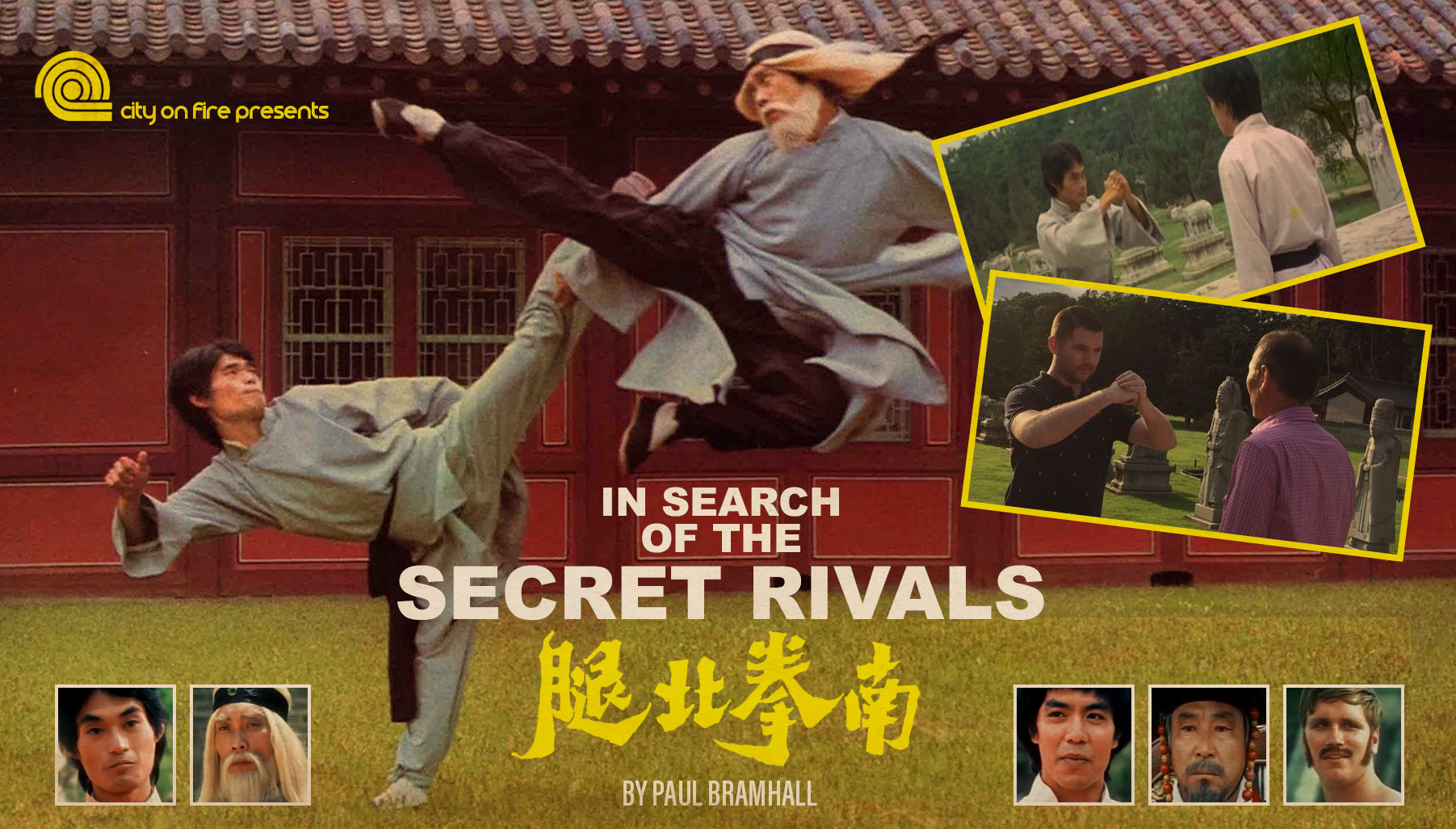
With the recent release of John Liu’s failed magnum opus New York Ninja, I was reminded of the arduous odyssey I once undertook to visit the location where the final fight took place in his breakout movie, 1976’s The Secret Rivals. It all began in 2014 when I interviewed Hwang Jang Lee in London as part of the SENI Strength and Combat Event that he was there visiting, and the interview that took place before mine was conducted by a Spanish couple who were making a documentary about John Liu’s life (I still wonder whatever happened to the documentary to this day!). One of the questions that they asked was around working with Liu on Secret Rivals, and in his answer Jang Lee mentioned that it was filmed in Korea. This was something I already knew, but it’d been so long since I’d seen The Secret Rivals on an early 2000’s Mei Ah DVD (that already looked like a relic when it was released), that it had somehow slipped my mind.
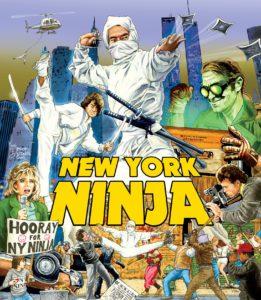
Kungfubob O’Brien’s Blu-ray artwork for Vinegar Syndrome’s New York Ninja release.
The finale in question involved John Liu and Don Wong Tao teaming up to take on Hwang Jang Lee in a striking temple complex, the most recognisable part being the long path leading up to the main temple building that was adorned with large animal statues either side. The fight actually takes place in and around the path, with the animal statues themselves being used to launch flying kicks off, and is instantly recognisable whenever it appears – I’ve spotted it in both Casanova Wong’s Magnificent Wonderman from Shaolin and Jackie Chan’s Dragon Fist. My better half happens to be Korean, and at the time we were planning to relocate to the Philippines the following year, the close proximity of which would allow plentiful opportunities to visit the in-laws for long weekends and alike, so just like that visiting the temple became top of my ‘to-do’ list.
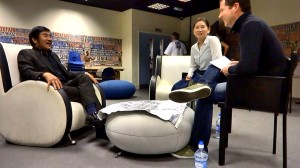
Paul interviews Hwang Jang Lee. Read the full interview here.
During my interview with Jang Lee I threw in the question of where the finale was filmed, however I hit my first hurdle when he couldn’t remember. Considering I have difficulty remembering what happened last year, I couldn’t be too unforgiving to the fact a 70-year-old legend couldn’t recall a location from almost 40 years ago, so we moved on and I took a mental note to look into it later with my inside connection. After harassing my wife with clips of the fight on YouTube and assuring her it was definitely in Korea, for the sake of my marriage I soon decided to no longer pursue my inside connection. That was the second hurdle. She was confident though that either her parents or some other family members should be able to identify it, so the next time we visited Korean shores I loaded up the YouTube clip once more in the hopes that the location would be recognisable.
At this point it’s worth noting that Korea is littered, actually let me change that word, graced, with literally hundreds of temples, and outside a handful of the most popular ones in locations like Seoul and Busan, identifying one after seeing a grainy YouTube clip of a 70’s kung fu movie is arguably a long shot. Of course at the time my enthusiasm had me in a state of denial, and even though I was basically asking the Korean equivalent to if someone in the UK asked, “Can you name this pub?” then just showed the picture of the bar (from almost 40 years ago for that matter), I had hoped identification was just a YouTube clip away. With the power of retrospect I can now say that expectedly, the clip drew a further blank, however with much gratitude my in-laws were determined to locate where these 3 characters were kicking the crap out of each other, and began fervently contacting a network of aunts and uncles.
We’d already left Korea when the intel came through – thanks to the detailed description my father-in-law had given (they felt more confident describing it rather than sending through the clip, although thinking about it now maybe the latter option would just have been embarrassing), a relative in Busan had it pinned. A temple defined by the many animal statues around it? It had to be Haedong Yonggung Temple, also in Busan and equally as popular for its seaside location. Bomun Temple dates back to 1376, and although it was destroyed during the Japanese invasions throughout 1592 – 1598, in the 1930s it was re-built, and in 1974 it was re-named to what it’s known as today. Considering The Secret Rivals was filmed just 2 years after the re-naming, I figured it must have been well known at the time, so made perfect sense to act as a filming location for the booming kung fu movie craze.
We returned to Korea in the spring of 2016, and a trip to Busan was naturally on the cards. Meeting up with extended family there, a motely crew of us headed for the temple on a day trip. My wife’s uncles and aunties had some inkling that I was pretty excited to head there, although even today I’m still not sure they knew exactly why. It was a hot day for spring, and the skies were clear, and as we drove there I was already imagining geeking out and trying to recreate certain poses (and probably failing) from The Secret Rivals finale that could be snapped for prosperity. Such thoughts were always swiftly followed by the more troubling one of how I was going to do so and not have my wife’s extended family feel concerned about my mental state. The balancing act was a delicate one.
Upon arriving at Haedong Yonggung Temple you’re immediately struck by its beauty, the entire complex nestled on the rocks that give way to the ocean, and indeed there are animal statues throughout, each one stood upright in a human like pose. Within a few minutes I knew it wasn’t the place, and I quietly nudged my wife to say the same. “This place is awesome, but it’s not the temple from the movie.” She glanced at me sharply, “I know! Just enjoy it!” I guess I must have been talking about finding the temple for over a year now, and it was understandable she was suffering from “let’s find the temple from the end of this 70’s kung fu movie!” fatigue. Enjoy it we did, and regardless of the fact it wasn’t the place we thought it was, that didn’t take away from its beauty or any aspect of the day. An uncle of my wife asked me at one point, “Is this the place you’re looking for?”. “It’s not, but you know what, it really doesn’t matter.” I replied.

After that trip I decided to let it go, accepting that looking for a specific temple without any kind of name or even inkling to what area it’s in was like searching for a needle in a haystack, and at the end of the day, there’s more important things in life. As is always the case in life though, once I stopped talking about it, good fortune came my way. At this point I’d like to say I doubled down on my efforts and really delved into the depths of the internet to pull some magic out of the bag, but ultimately it wasn’t me, it was my wife. “Found it!” she suddenly yelled out one evening while we were attempting to stay cool from the Manila heat. “The reason why nobody could find it is that it’s not a temple, it’s a tomb.” The tomb of Emperor Gojon (1852 – 1919) and Empress Myeongseong (1851 – 1895) to be exact.
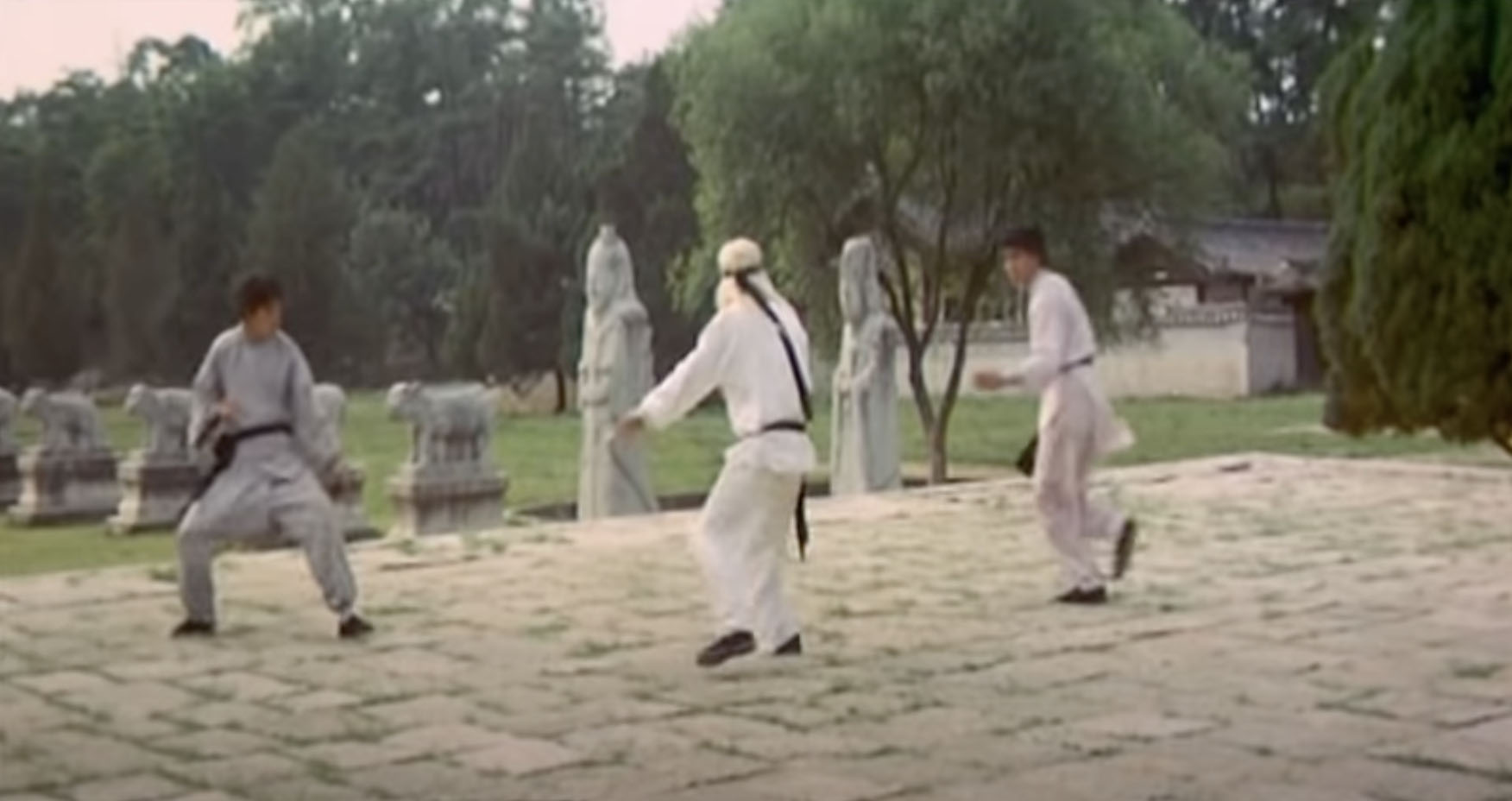
It’s important to bear in mind that imperial tombs in Korea aren’t just any tombs, usually encompassing full sites which include buildings, tomb keepers housing, and gardens. To the uneducated eye (slowly raises hand) it’s understandable that one could be mistaken for a temple, and only at a closer look once you see a mound, essentially a small grassy hill, will it giveaway that it’s a tomb, as the bodies are buried underneath. Located in Gyeonggi-do, a couple of hours away from Seoul, Hongneung was the location we were after, otherwise known as the royal tomb of Emperor Gojong, the 26th monarch, and Empress Myeongseong. A google image search of the location proved it was the right place, instantly recognisable from the rows of animal statues on each side of the path leading up to the Royal bedchamber hall. That weekend I cooked, cleaned, and succumbed to just about any other request that came my way.

Our next visit to Korea was in summer 2016, almost 2 years since I’d interviewed Hwang Jang Lee and had the bright idea to visit what, until this point, had remained a location shrouded in mystery. It was a public holiday on the Monday in the Philippines, so we’d decided to do a 4-day trip from Saturday to Tuesday, and on the Monday my in-laws also took the day off so we could make a day of it together. How many people get to say they did a day-trip with their in-laws to see the location that The Secret Rivals finale was filmed at? Life felt good. After following the GPS we pulled into the small gravelly car park located next to the walls of the complex. It was the kind of place that became immediately obvious was a little off the beaten track, as we were the only car there and the whole place seemed rather quiet, kind of like when the Griswold’s arrive at Wally World at the end of National Lampoon’s Vacation only on a smaller scale.

I enthusiastically announced, “I’ll get the tickets!” while the others slapped on sunscreen and grabbed their sun umbrellas (are both really necessary?). Approaching the ticket booth I noticed with a gnawing sense of dread that it appeared to be boarded up, and as I came closer I noticed a board with the opening times listed. Everything seemed well and good, except for on the bottom of the board was a little asterisk that read “Closed: Mondays”. You may well ask why we didn’t check such an important detail before making a 2-hour drive, and that would be a good question, and also one which I don’t have an answer too. The wall was too high to even see inside, so we had literally driven all the way to see a closed ticket booth. So close and yet so far, I felt crushed like a nose that’s just been on the receiving end of one of John Liu’s kicks. But in the end it’d already been almost 2 years, a few more months surely couldn’t hurt.
We returned to Korea in 2017, and thankfully had no repeat of the previous year’s debacle. Even when it was open, Hongneung proved to be a quiet spot, clearly not a place on most tourists and perhaps even locals’ itineraries. Other than a handful of others, we had the entire place to ourselves, and as we entered Hongneung for the first time and the pathway came into view with the animals lining each side of it, I couldn’t help but grin from ear to ear. Unlike so many filming locations from the mid-70’s, or even mid-00’s in Korea’s case, seeing them today often yields a much changed location from when it was originally captured onscreen. Not here though, the pathway, the buildings, even the immediate surroundings, all looked like filming on The Secret Rivals may just have wrapped up a couple of hours earlier, it was completely unchanged.
I confess the lack of other visitors also made it feel slightly less embarrassing to partake in a number of kung fu themed photos, none of which have ever seen the light of day beyond my phone until now. It’s been 5 years since my visit to Hongneung, and a re-location back to Australia plus the COVID-19 pandemic have meant that, other than one more visit to Korea in 2018, we haven’t been back since. However the good news is that being a UNESCO World Heritage site, Hongneung hasn’t changed much in the over 100 years since Emperor Gojong was buried there in 1919, and isn’t likely to change anytime soon, so it’s always going to be there once we can travel freely once more. As expected, out of all the information pamphlets available on the tomb, not one of them makes any mention of The Secret Rivals or any of the other kung fu movies that were filmed there, so if this feature serves any purpose, perhaps that’s it.
As for myself, I remain on the lookout for cool locations to visit for the next time we’re able to hit Korea, especially from their old-school kung fu flicks. I confess in almost every Korean kung fu flick I see there’s always a fight scene at the same location, a rocky beach next to a pool of water, and a part of me still thinks it’s worth trying to find. Who wouldn’t want to stand in the same location as the likes of Dragon Lee and Elton Chong? But then it if took that long to find a man-made location, I’m not sure it’s worth trying to fathom how long it’d take to find a particular secluded body of water through only fight scenes that were filmed 40 years ago. Still, I’ll give it a try. It may have taken 3 years to get there from the initial idea, but for anyone else that’s keen to check it out, unlike the title of the movie it’s a part of, Hongneung Royal Tomb at least is not a secret anymore.
https://www.youtube.com/watch?v=ulrz90hLYV4

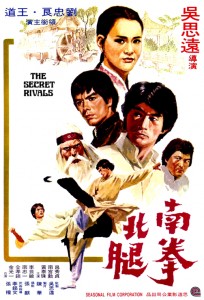
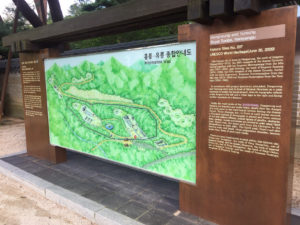
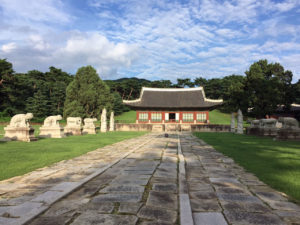

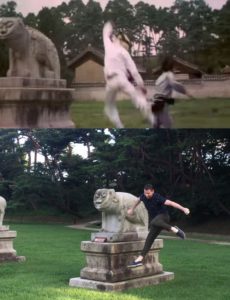



A wonderful journey. Thanks for sharing it with us.
If I ever find myself in South Korea, I could be tempted to make this same journey, but hopefully benefit from your perseverance and get there the first time.
This is so awesome! I love articles like this. Interesting and humorous. Dude, I actually felt gutted when you finally found it, but it was closed for the day. You have a top-notch father-in-law to join in the fighting pose, too. And your wife has to be a saint to deal with that obsession for all those years. Looking forward to reading about the next Bramhall treasure hunt.
I recently gave a first time watch to Jackie Chan and Lo Wei’s 1977 wuxia ‘To Kill with Intrigue’, made a year after ‘The Secret Rivals’, and was surprised to find the finale where Chan goes up against Sin Il-ryong was also filmed at Hongneung Royal Tomb, with one part of the fight taking place on top of the grassy dome that’s actually the tomb itself. What other movie can you find Jackie Chan literally fighting on top of someone’s grave!?